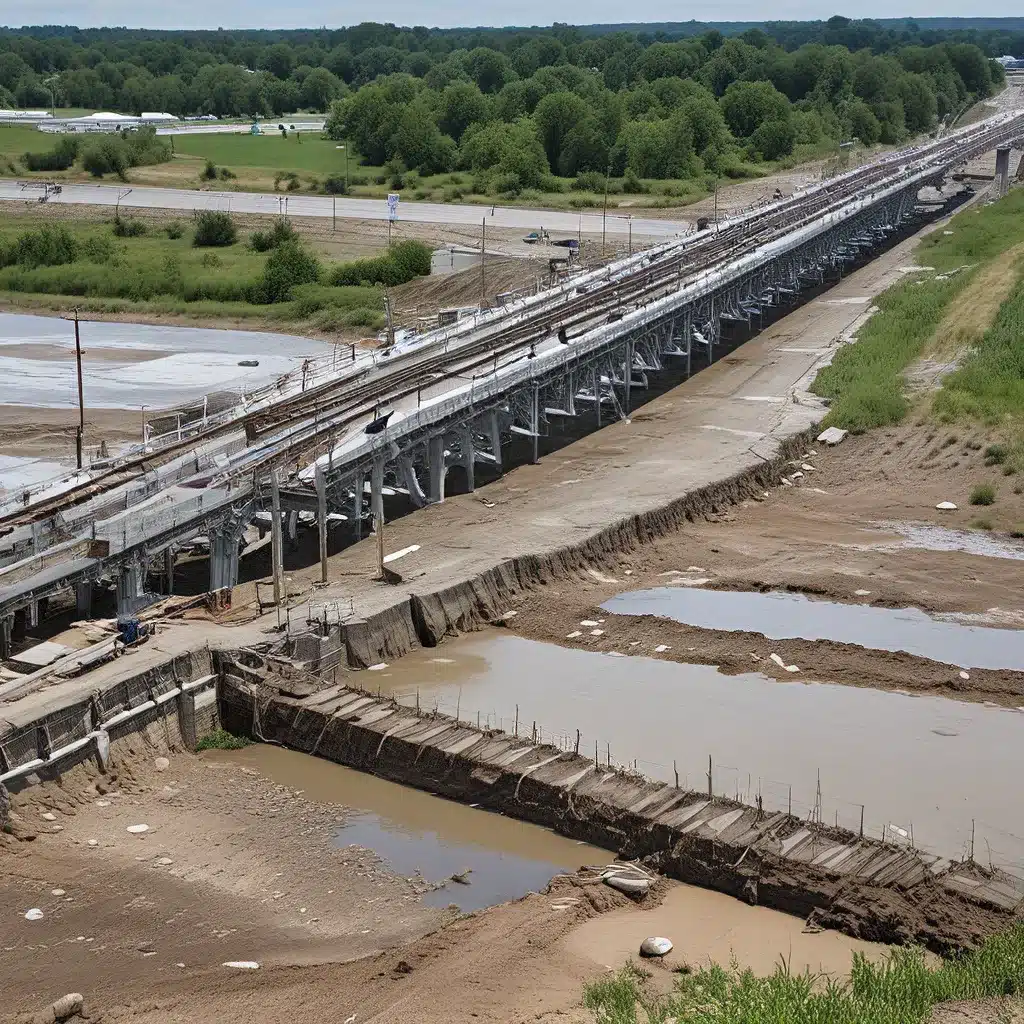
The Looming Crisis
As the effects of climate change become increasingly undeniable, the urgent need to safeguard our water infrastructure has never been more apparent. From severely depleted groundwater basins to vulnerable flood-prone facilities, the challenges we face are daunting. And with extreme weather events on the rise, the future of our communities, economy, and environment hangs in the balance.
But here’s the thing – we can’t just stick our heads in the sand and hope for the best. No, we need to think bigger and more strategically about how we approach water management. It’s time to get creative, to tap into the best in science, engineering, and innovation, and to prepare for what’s ahead.
You see, as Governor Newsom so aptly put it, “California’s water challenges are daunting.” But that doesn’t mean they’re insurmountable. In fact, with the right mindset and the right tools, we can build a climate-resilient water system that safeguards our communities, our economy, and our precious natural resources.
Facing the Realities of Climate Change
Let’s face it, the impacts of climate change are no longer just a distant threat. They’re here, and they’re real. From severely depleted groundwater basins to vulnerable infrastructure that’s at the mercy of extreme weather events, the challenges we face are multifaceted and complex.
Take the case of Iowa City’s North Wastewater Treatment Facility, for example. Back in 2008, the facility was forced to relocate after it was flooded. And it’s not just Iowa City – utilities across the country are grappling with the fallout of climate change, from contaminated drinking water to catastrophic infrastructure failures.
But here’s the kicker – the potential impacts of these extreme weather events can have a devastating ripple effect on our communities, our economy, and our environment. After all, the federal government has provided at least $36 billion in disaster recovery financial assistance for drinking water and wastewater infrastructure-related projects in recent years. That’s a staggering number, and it’s only the tip of the iceberg.
Building Resilience: The Way Forward
So, what do we do? Throw in the towel and accept defeat? Absolutely not! Instead, we need to roll up our sleeves and get to work. Because the future of our water infrastructure, and the well-being of our communities, is at stake.
But where do we even start? Well, Governor Newsom has the right idea – we need to take a comprehensive, all-encompassing approach. That means looking at the big picture, assessing our current water supplies and the health of our waterways, and then developing a strategic plan to ensure long-term resilience.
And it’s not just about building stronger, more resilient infrastructure. It’s also about using the latest in science, technology, and innovation to find creative solutions. Maybe that means exploring new ways to capture and store water, or developing more efficient water treatment processes that can withstand the rigors of extreme weather.
But the real key, I think, is collaboration. We can’t do this alone – we need to bring together experts from across the board, from federal and state agencies to universities and industry groups. By organizing a network of technical assistance providers, we can ensure that every utility, no matter their size or location, has access to the resources and support they need to build climate-resilient infrastructure.
Overcoming the Obstacles
Now, I know what you’re thinking – easier said than done, right? And you’d be absolutely right. Building resilient water infrastructure in the face of climate change is no easy feat. There are a lot of obstacles to overcome, from funding challenges to regulatory hurdles.
But that’s where innovation and collaboration come into play. By requiring that climate resilience be considered in the planning of federally funded water infrastructure projects, we can ensure that utilities are proactively addressing these issues. And by tapping into the expertise of technical assistance providers, we can help utilities navigate the complexities of climate adaptation and disaster preparedness.
It’s not going to be a walk in the park, that’s for sure. But here’s the thing – if we don’t act now, the consequences could be catastrophic. Water is essential for human health and well-being, and the potential impacts of extreme weather events on our drinking water and wastewater systems could be devastating.
A Resilient Future Starts Now
So, let’s get to work, shall we? Because the future of our water infrastructure, and the well-being of our communities, is at stake. And with the right mindset, the right tools, and the right team, I truly believe we can build a climate-resilient water system that will stand the test of time.
Sure, it’s going to be a long and winding road, but think of the payoff. Imagine a world where our water infrastructure is strong, resilient, and equipped to handle whatever Mother Nature throws our way. A world where our communities, our economy, and our environment are protected, no matter what the future holds.
It’s a lofty goal, I know. But if we work together, get creative, and think outside the box, I’m confident we can make it a reality. So let’s roll up our sleeves, dive in, and get to work. The future is ours to create, and the time to act is now.


